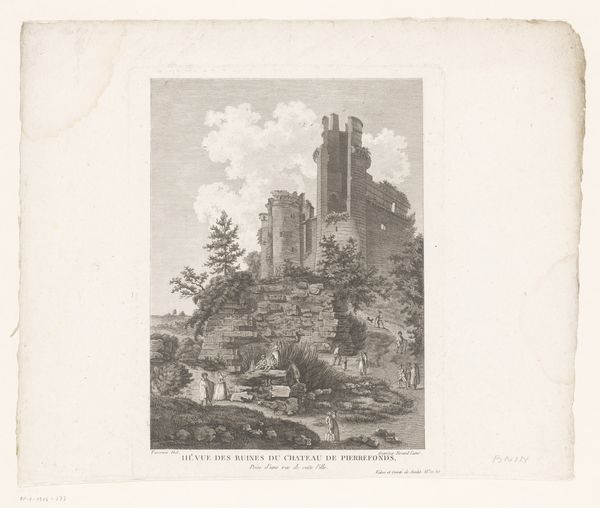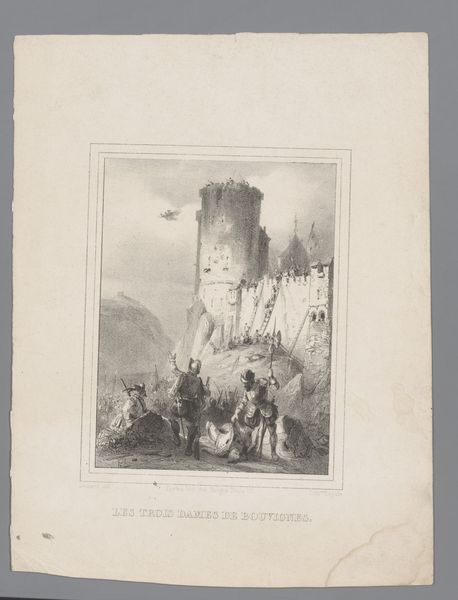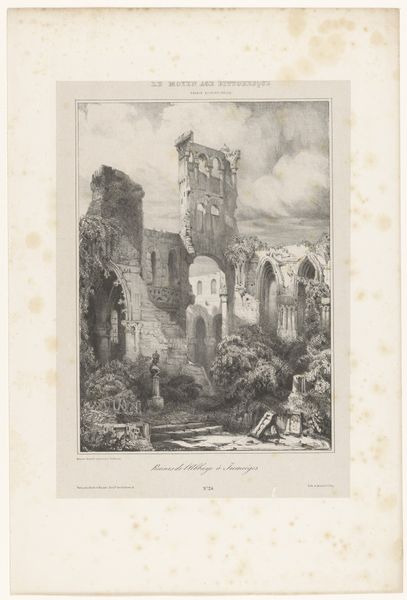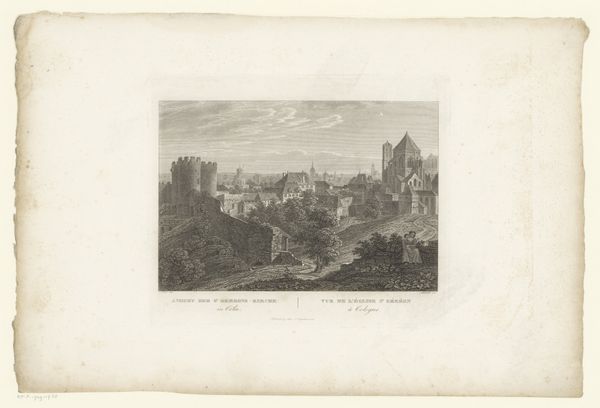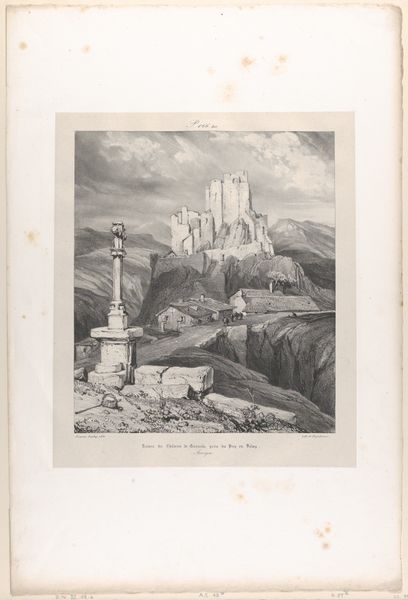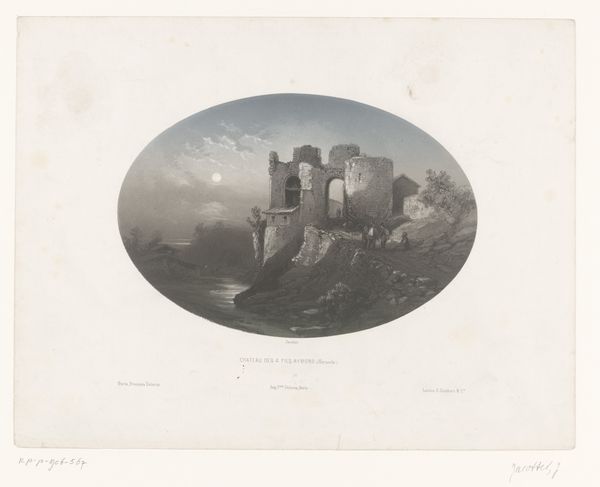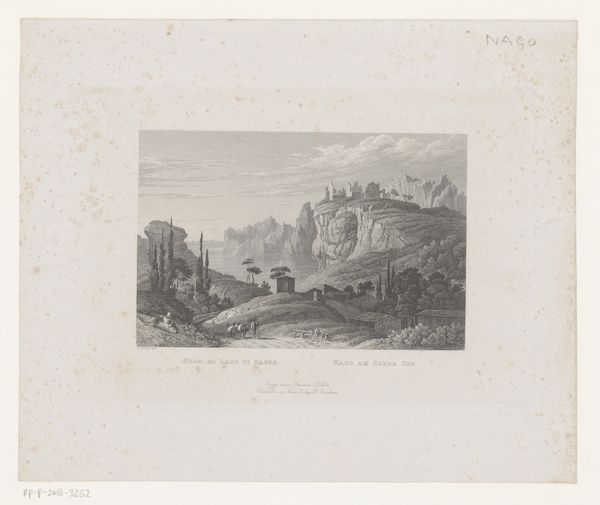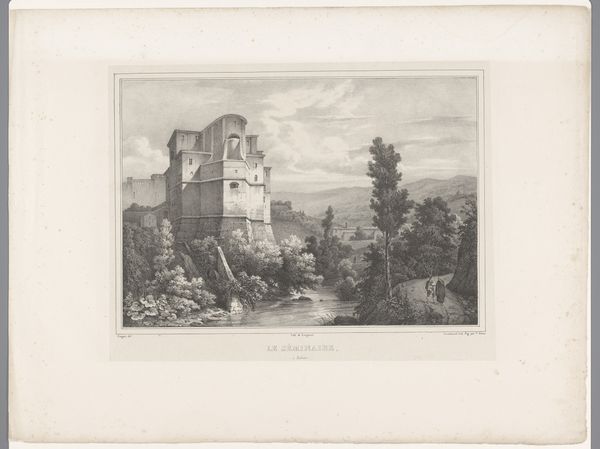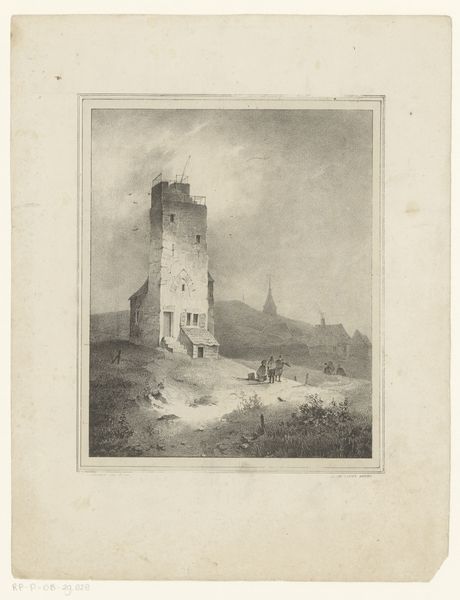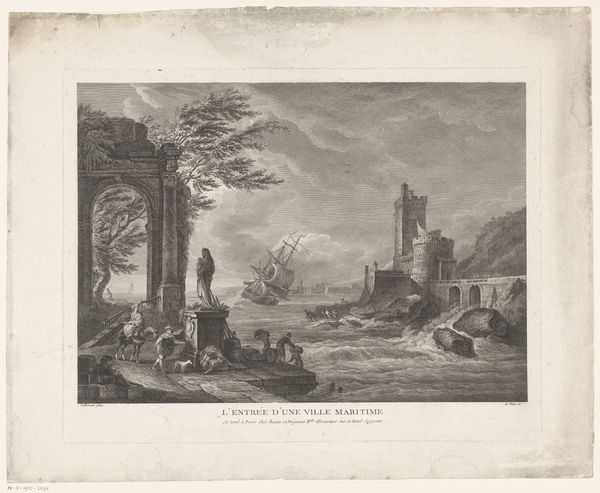
#
aged paper
#
pale palette
#
muted colour palette
#
light coloured
#
white palette
#
natural colour palette
#
watercolour illustration
#
natural palette
#
soft colour palette
#
watercolor
Dimensions: height 433 mm, width 362 mm
Copyright: Rijks Museum: Open Domain
Curator: This is "Gezicht op kasteel Clam," an 1850s watercolour by Jobst Riegel. It depicts a rather romantic vision of Castle Clam. What’s your first impression? Editor: Stark and beautiful, despite the washed-out palette. There's an almost monochromatic layering of tones that creates a palpable sense of depth. The strong verticality pulls the eye upwards. Curator: Indeed. This artwork, rendered during the mid-19th century, speaks to a fascination with picturesque landscapes and historical architecture. It was made during a time when travel became more accessible and people romanticized Medieval times. Editor: The formal composition lends itself perfectly to that romanticism. The high horizon line, the stark contrasts in shading to describe form, the textures are carefully replicated. You almost feel as if the scene itself is a stage. Curator: Consider that visual organization as strategically echoing then-popular political and social structures. The imagery and dissemination of similar architectural scenes helped define ideas of cultural identity, national heritage, and perhaps more obviously royal legacy. Editor: It's curious to consider the intent of such depictions. Here, the light, albeit faint, catches the cylindrical tower in an almost heavenly manner. It directs us and elevates the castle. The symbolism suggests strength, enduring power. Curator: The historical narrative constructed here served a specific social function, legitimizing certain power structures and shaping collective memory. Artists had to engage the powers of the day or not get paid. Editor: I see. Even in the seemingly innocent rendition of light, shadow, and stone, narratives of power are subtly—or not so subtly—woven. And yet, despite the propaganda value, there’s the pure aesthetic delight in the composition, too. The tension between depth and surface is beautiful. Curator: Absolutely. Reflecting on both of these elements grants us a fuller appreciation of how art, politics, and cultural identity intersect. Editor: Agreed. Art serves multiple masters.
Comments
No comments
Be the first to comment and join the conversation on the ultimate creative platform.
